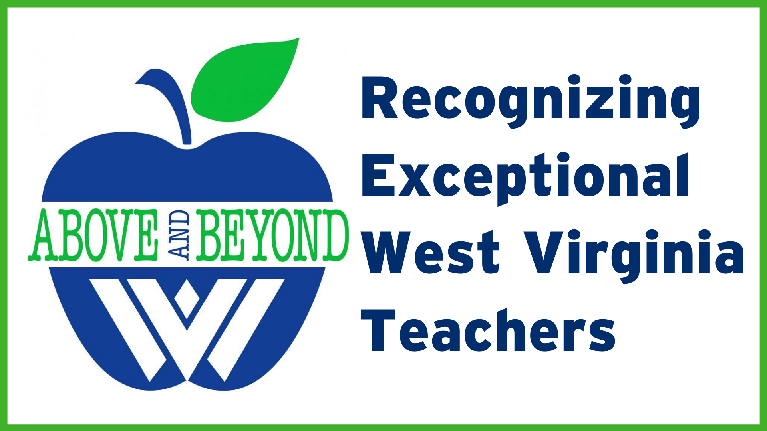We continue this week with our summer-long radio series “Closing the COVID Gap,” which explores the challenging road ahead for West Virginia K-12 education.
In this week’s story, we take a closer look at the millions of federal dollars flowing into the state to help with COVID-relief in our schools.
Last week, the West Virginia Board of Education discussed the additional dollars from the American Rescue Plan and how it might be used.
How To Spend More Than A Billion In COVID Relief
We’re talking about $1.2 billion.
That’s how many federal dollars have been awarded to West Virginia schools since last summer to tackle the impacts of COVID-19.
This funding, called ESSER, is an acronym for Elementary and Secondary School Emergency Relief. It hit the billion mark in the spring thanks to the American Rescue Plan, which added more than $760 million to the pot.
The American Rescue Plan is the third round of ESSER funding to West Virginia.
State education officials and school districts are required to use some of the American Rescue Plan money to address specific things like learning loss and summer school. But many of these dollars can be used however districts see fit as long as it’s for the prevention, preparation and response to COVID-19.
“What I want to talk about today is something that we’ve all been talking about, and that’s next school year,” said Mickey Blackwell, executive director of the West Virginia Association of Elementary and Middle School Principals, speaking to state board members last week. “Every meeting I go to, we talk about the social and emotional needs of our students, because they’re so stressed, many of them haven’t been in school, or they’re returning to school. There are worries about anxiety.”
Blackwell and other state education leaders have been talking about where the extra relief dollars should go, and there’s been a major push around the country to address social-emotional needs.
These needs range from social interactions, like seeing classmates and teachers, to not feeling alone or to supporting children and adults who may feel scared or anxious. For Blackwell, he told board members last week, he would like to see at least one, full-time school counselor in every school building.
A recent survey from Education Week found that 92 percent of teachers in the United States say their job is more stressful now than before the pandemic.
Many students are also stressed and anxious about returning to school.
Stress is also on the minds of state education officials, like Sonya White, senior officer for the West Virginia Department of Education’s Office of Teaching and Learning. She said federal dollars will go a long way to address the social-emotional needs of students.
“This gives us an opportunity,” White said. “Our students have been isolated. They’ve not had a lot of opportunities to interact with each other or to talk to a caring adult. So the need is definitely there.”
How The American Rescue Plan May Help
The American Rescue Plan, as it pertains to schools, has two main goals: First is to safely reopen schools to in-person instruction and to keep them open. Second is to address disruptions to teaching and learning resulting from the pandemic.
“We have to keep those two major goals in mind as we think about how we will spend this money, and districts need to keep that in mind as they decide how to spend this money,” said Melanie Purkey, senior officer for the WVDE’s Office of Federal Programs and Support.
Purkey said the first round of ESSER funding has almost been completely spent by counties. That funding was awarded last summer and was used mostly on personal protective equipment (PPE) and technology needs so students could participate in school from home in the fall.
Schools now are just beginning to use the middle, or second, round, but its focus so far, according to Purkey, has been on hiring additional staff.
The American Rescue Plan, or the third round, is just now in the approval process — meaning states and county school districts are thinking about ways they’ll spend their dollars and on what needs.
At least $175 million of the American Rescue Plan in West Virginia must be dedicated to learning loss, according to the U.S. Department of Education. Nearly $8 million must be used for summer programs, and another roughly $8 million must be dedicated to after-school programs.
“That leaves $548 million remaining that counties can allocate for allowable uses,” said Purkey.
These allowable uses can be for things like hiring more teachers, supporting existing ones, hiring more counselors, replacing HVAC systems and windows for better airflow, renovating bathrooms to install motion-sensor technology, or even replacing carpet with tile to make cleaning easier.
But all of the ESSER funding, including the new American Rescue Plan, comes with an expiration date. Counties will have until 2024 to expend all the funding from the American Rescue Plan, in particular.
Purkey said having that time will make a difference for counties as they decide how to spend these dollars.
“Counties have three years to develop strategies and work with children and monitor their progress and improve what they are doing to help them regain that ground,” Purkey said. “I’m hopeful that at the end of that three years, they will have regained and surpassed where we were before.”
Every project must be approved by the U.S. Department of Education and the West Virginia Department of Education.
All ESSER funding is based both on need and population.
Purkey said all 55 counties are scheduled through July to give in-person presentations to the WVDE about ways they intend to use the new dollars.
Plans will then be put on public comment. Counties have until Aug. 1 to officially submit their goals for the American Rescue Plan.
This episode of “Closing the COVID Gap” originally aired on West Virginia Morning on June 16, 2021.




















